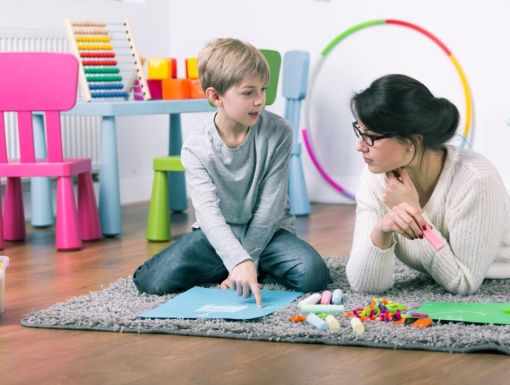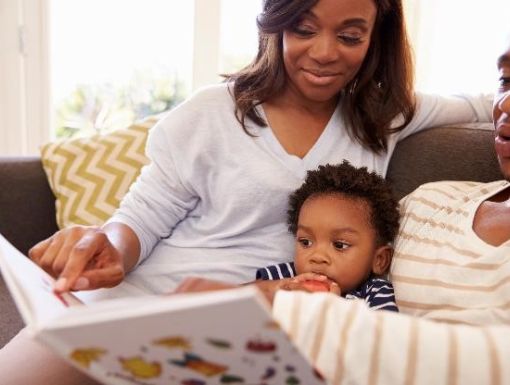
What's AAC and How Can It Help My Child Communicate?
Have you ever waved to someone as a way of saying “hello” or sent a handwritten note to a friend? Then you’ve used augmentive and alternative communication without even realizing it!
What is AAC?
Augmentive Alternative Communication (AAC) includes all of the ways we share our ideas and feelings without talking. We all use forms of AAC every day. You use AAC when you use facial expressions or gestures instead of talking. You use AAC when you write a note. We may not realize how often we communicate without talking, but we use AAC all the time!
Using AAC is a great way to help childrenwith severely impaired speech and language skills become empowered communicators. AAC systems can be aided or unaided.
What are the types of AAC?
- Unaided: using body language, gestures and/or sign language
- Aided, low-tech: paper and pencil, photographs with a printed label, communication binders
- Aided, high-tech: speech generating devices such as iPads
How can I target language and literacy skills on my child’s device?
One way to increase language skills is through story time. Usingbooks to promote early language and literacy development for AAC users is not only fun and engaging, but also effective in improving vocabulary. Research also shows using interactive book reading intervention improves overall language development.
Books expose young children to familiar and novel adjectives, verbs and nouns while encouraging them to use these words to participate in reading. When reading, it’s important to comment and ask questions. See a sample dialogue below.
ADULT: “I see a horse! What do you see?” (Point to icon/photo if needed or allow child to independently select icon/photo.)
CHILD: Allow for child to select appropriate icon/photo or have adult model by selecting the appropriate icon/photo with child’s finger.
(Child selects icon/photo of “horse.”)
ADULT: “A horse! Good job finding the word ‘horse’! What about this boy? What is he doing?” (Point to icon/photo if needed or allow child to independently select icon/photo.)
CHILD: Allow for child to select appropriate icon/photo or have adult model by selecting the appropriate icon/photo with child’s finger.
(Child selects icon/photo of “eat.”)
ADULT: “He is eating. You are right!”
Books are also a great way to encourage pre-literacy skills. These skills include rhyming, alliteration, segmenting words into smaller units, and combining separate sounds into words. Below are examples of how to facilitate these skills with the use of the AAC device.
Use books that have repetition! This structure allows the child to build vocabulary and connect sounds to print and print to pictures. Examples, in Brown Bear, Brown Bear What Do You See? by Bill Martin, Jr. and Eric Carle, the child can spell out each color/animal and identify the rhyming words in the book. When students participate in the activity, they are more likely to stay engaged and practice learning the targeted skill.
Play a guessing game! The parent will sound out each sound and have the child guess what the word is! Example, “/m/ /ʌ/ /ŋ/ /k/ /i/” and the child can either produce or guess the animal on their device. If they have difficulty, increase support by asking, “What sound did you hear in the beginning?” Have the child spell out sound-by-sound what they heard on their AAC device, or give the child two options: “Did I say ‘frog’ or ‘monkey’?”
To learn more about AAC or other ways to promote language and literacy development, contact us at Ochsner Therapy and Wellness for Children.



